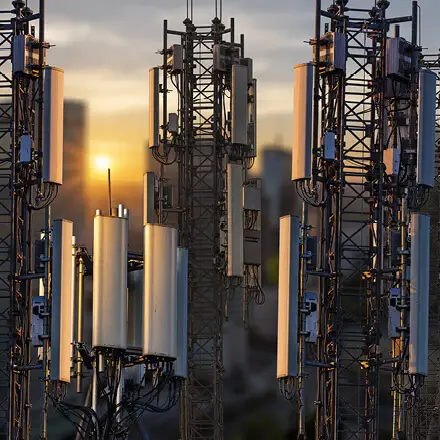Veröffentlicht am 25. Juni 2021
Drei negative Effekte von Elektrosmog auf das Herz-Kreislauf-System
Der Arzt wird Sie dann fragen, ob Sie Rauchen, Alkohol trinken, Sport machen, gesund essen, um eine mögliche Ursache für Ihre Herzkreislaufbeschwerden zu finden.
Das sind oft schon alle Umweltfaktoren, die bei der Diagnose berücksichtigt werden. Doch gibt es da nicht noch weitere Signale aus der Umgebung, die sich negativ auf das Herz-Kreislauf System auswirken?
Immer mehr unabhängige Forscher und Mediziner weisen auf den Zusammenhang zwischen Herz-Kreislauf-Störungen und Elektrosmog hin.
Drei negative Effekte werden auch in wissenschaftlichen Studien immer wieder dokumentiert:
Im Jahr 2014 zeigte die Forscherin Maie Bachmann, dass elektromagnetische Strahlung die physiochemischen Eigenschaften von Wasser verändern kann.
Das heißt, die natürlichen Transport-, Lösungs- und Kommunikationseigenschaften des Wassers werden beeinträchtigt. Dies kann sich negativ auf das Herz-Kreislauf-System auswirken.
Probleme wie Herzrhythmusstörungen, Bluthochdruck, Burn-Out, Müdigkeit, Konzentrationsschwierigkeiten, Leistungsabfall und mangelnde Regenerationsfähigkeit sind nur einige der möglichen Unannehmlichkeiten.
Es wurde gezeigt, dass Handys das natürliche Gleichgewicht für die Herzratenvariabilität (HRV) verändern konnte. Weil das Gerät während des Gesprächs nahe am Kopf ist, kann es das autonome Nervensystem, das eine Verbindung zur Steuerung der Herztätigkeit (Schrittmacher) hat, beeinflussen.
Die gesetzlichen Grenzwerte für Mobilfunkstrahlung sind nicht ausreichend, da sie sich nur auf die thermische Wirkung (wärmebedingt) und nicht die athermischen (nicht-wärmebedingten) Auswirkungen beschränken.
Das ist im Prinzip so, als würde man die Wirkung von radioaktivem Material auf den Menschen allein mit der Messmethode eines Thermometers beurteilen.
Hier geht’s zum Kontaktformular
Das sind oft schon alle Umweltfaktoren, die bei der Diagnose berücksichtigt werden. Doch gibt es da nicht noch weitere Signale aus der Umgebung, die sich negativ auf das Herz-Kreislauf System auswirken?
Immer mehr unabhängige Forscher und Mediziner weisen auf den Zusammenhang zwischen Herz-Kreislauf-Störungen und Elektrosmog hin.
Drei negative Effekte werden auch in wissenschaftlichen Studien immer wieder dokumentiert:
1. Die physikalischen Eigenschaften des Wassers im Körper verändern sich
Der Mensch besteht aus über 70 % Wasser. Im menschlichen Körper hat Wasser drei Hauptfunktionen: Es dient als Transportmittel, Lösungsmittel und Kommunikationsmedium für Zellen.Im Jahr 2014 zeigte die Forscherin Maie Bachmann, dass elektromagnetische Strahlung die physiochemischen Eigenschaften von Wasser verändern kann.
Das heißt, die natürlichen Transport-, Lösungs- und Kommunikationseigenschaften des Wassers werden beeinträchtigt. Dies kann sich negativ auf das Herz-Kreislauf-System auswirken.
2. Die roten Blutkörperchen verklumpen und behindern den Blutfluss
Elektromagnetische Strahlung (EMS) verklumpt die roten Blutzellen. Der Blutdruck steigt, die Versorgung mit Sauerstoff und Nährstoffen in den Kapillaren ist erschwert oder teilweise nicht mehr möglich. Auch die Entgiftungskapazität wird verringert.Probleme wie Herzrhythmusstörungen, Bluthochdruck, Burn-Out, Müdigkeit, Konzentrationsschwierigkeiten, Leistungsabfall und mangelnde Regenerationsfähigkeit sind nur einige der möglichen Unannehmlichkeiten.
3. Die Fähigkeit des Herzens die Herzfrequenz anzupassen, wird beeinträchtigt
In einer Studie wurde untersucht, welchen Einfluss Mobilfunkstrahlung auf die Herztätigkeit, insbesondere die Herzratenvariabilität (die Fähigkeit des Herzens, die Herzfrequenz anzupassen) von gesunden Menschen hat.Es wurde gezeigt, dass Handys das natürliche Gleichgewicht für die Herzratenvariabilität (HRV) verändern konnte. Weil das Gerät während des Gesprächs nahe am Kopf ist, kann es das autonome Nervensystem, das eine Verbindung zur Steuerung der Herztätigkeit (Schrittmacher) hat, beeinflussen.
Was können Sie tun, um Herz-Kreislauf-Störungen durch Elektrosmog zu vermeiden?
Besonders kritisch ist die Kombination aus gesundheitlicher Vorbelastung und Strahlungsbelastung. Es ist daher empfehlenswert, bei Herz-Kreislauf Beschwerden immer diese Art der Strahlung in die Diagnose mit einzubeziehen.Die gesetzlichen Grenzwerte für Mobilfunkstrahlung sind nicht ausreichend, da sie sich nur auf die thermische Wirkung (wärmebedingt) und nicht die athermischen (nicht-wärmebedingten) Auswirkungen beschränken.
Das ist im Prinzip so, als würde man die Wirkung von radioaktivem Material auf den Menschen allein mit der Messmethode eines Thermometers beurteilen.
Ihr nächster Schritt:
Ein persönliches Gespräch mit einem unserer Experten, um gemeinsam eine Lösung auszuarbeiten.Hier geht’s zum Kontaktformular











